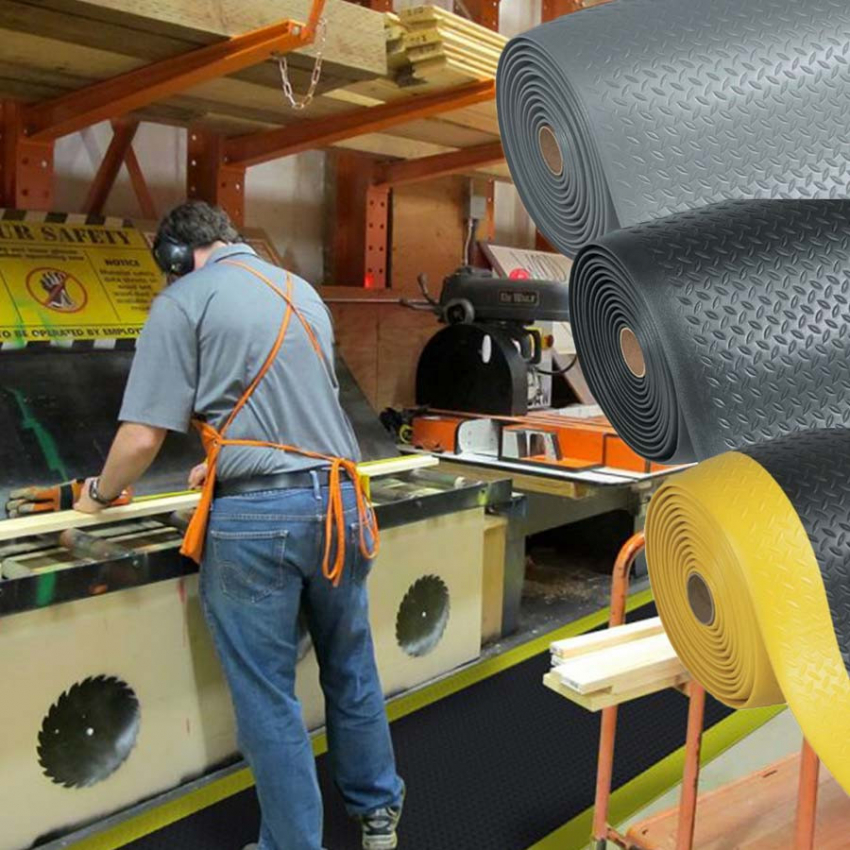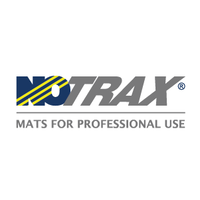











Design industriel en tôle de diamant permettant les rotations en pivot. Confort exceptionnel des employés grâce à une épaisseur. Couche protectrice augmentant la durée de vie du tapis de 50% par rapport à des tapis en vinyle micro cellulaire standard. Disponibles avec les bordures jaunes selon le code OSHA 1910-144. Les 4 côtés sont biseautés et scellés afin d’éviter que les employés ne trébuchent.
Disponible en dimensions standards, en rouleau, en mètres linéaires et sur mesure.
Absence totale de produits nocifs et toxiques tel que le DOP, le DMF, de produits nocifs pour la couche d’ozone, de silicone et de métaux lourds.
Classification antidérapante R10 conformément à la norme DIN51130 et à la règle BG-BGR181
Disponibles avec les bordures jaunes selon le code OSHA 1910-144.
Les 4 côtés sont biseautés et scellés afin d’éviter que les employés ne trébuchent
Classement feu : 2 en accord avec la norme NFPA, code de sécurité 101
Ce tapis anti fatigue s'utilise en milieux secs à installer en longueur pour les employés travaillant debout devant un établi ou plan de travail.

| 419S0023BY |
Data sheet
| Format | Mat Roller |
| Properties | Anti-fatigue Fire resistant |
| Composition | Micro-cellular vinyl foam |
| Thickness | 12.7 mm |
| Weight | 4 kg/m2 |
| Borders | beveled on all four sides |
| Sole | Microcellular vinyl |
| Resistant to chemicals | No |
| Environment | Dry environments |
| Intensity of use | Intense |
| Hardness | 20 Shore A |
| Wear index | 2/3 (Very good) |
| Anti-slip classification | R10 |
Industrial mats meet the needs of ergonomic workstations and employee well-being.
They prevent:
There are many uses for industrial mats:
Safety criteria: The mat must cover the entire workstation, be firmly attached to the floor, not shift or slide, and have bevelled edges to prevent falls.
Thickness and flexibility criteria: Contrary to what you might think, you shouldn't choose a very thick or very soft mat. The mat should have a certain elasticity, but still allow a comfortable standing position, without the user feeling slumped.
Environmental criteria :
Environmental hazard criteria : To establish more precise characteristics for a mat (antistatic properties or fire resistance etc...) we need to take into account the hazards present in the environment where the mat will be installed.
Where hazardous liquids are present in the working environment, the anti-slip properties and chemical resistance of industrial mats should be taken into account. The presence of openings on mats to allow the evacuation of fluids is essential.
Traffic criteria: We need to take into account the traffic that takes place on the equipment: how many workers can walk on it? How often, etc., in order to choose the most suitable mat.
Prevent the many problems associated with poor workstation ergonomics: RSI, static shock, bacterial proliferation, etc.
We offer a wide choice of industrial mats: on rolls, in standard sizes, made-to-measure or modular mats to suit all types of workstations.